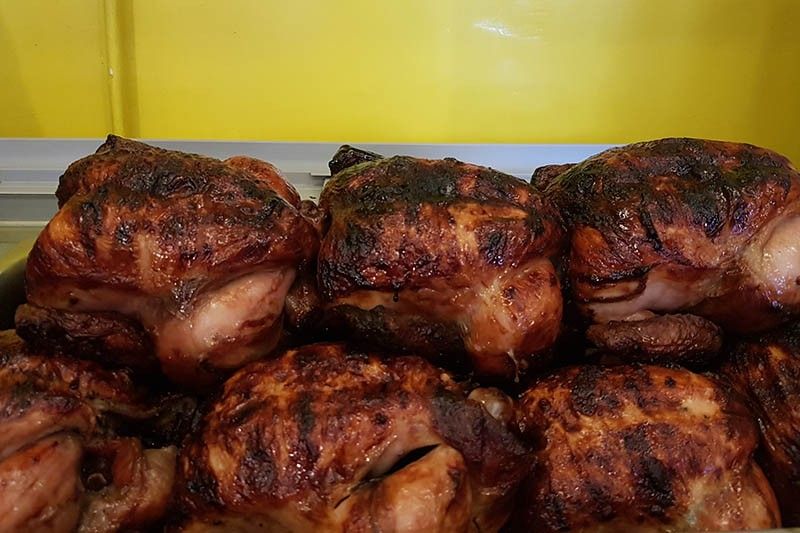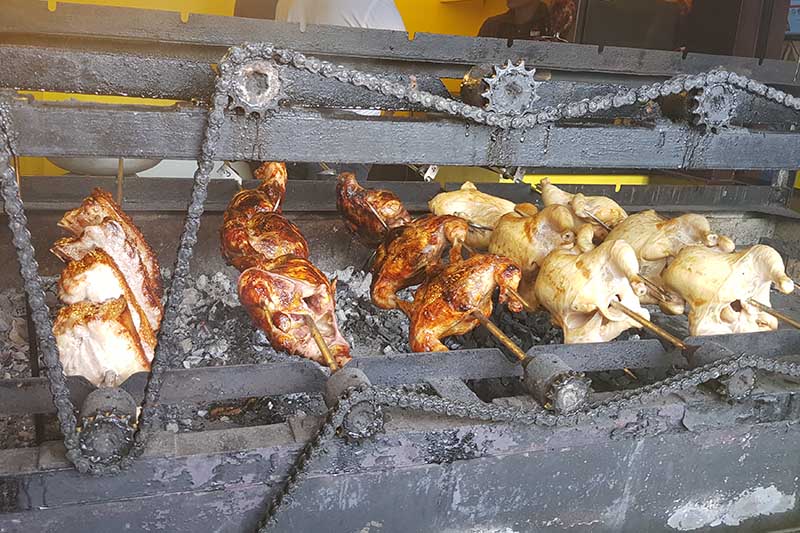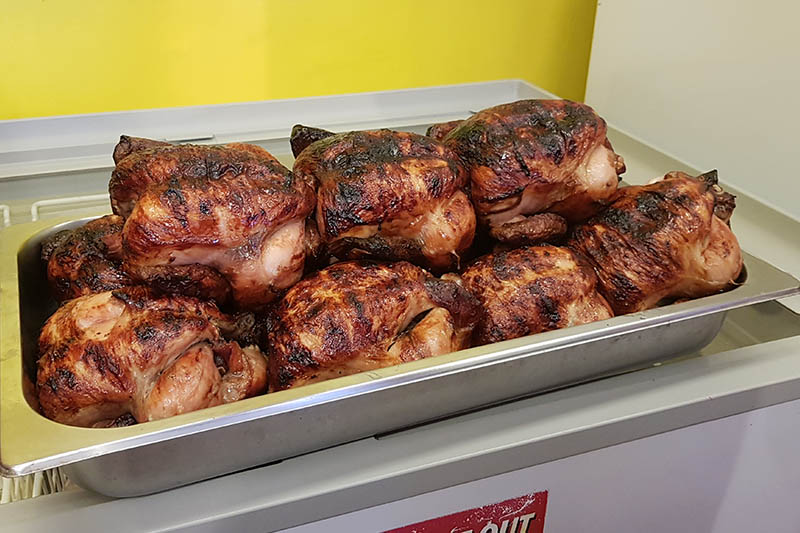Four ways to enjoy 'lechon manok'

DAVAO CITY, Philippines — There is no denying that Filipinos love eating chicken.
Studies show that as of 2017, the chicken production in the country reached 1.75 million metric tons, proof that Filipinos make chicken an everyday fare and they seem to cannot live without it.
"Lechon manok" (roasted chicken) is an all-time favorite just like the orginal "lechon" (roasted pig). But it surpasses the iconic lechon in terms of affordability and wide presence in the market.
The consumer craze for lechon manok began in the 1980s. Now, thousands of lechon manok kiosks dot the archipelago, even in far-flung municipalities.
This tasty and juicy dish, which goes well with a lechon sarsa (sauce) or pickled papaya on the side, is best served during lunch or dinner.
The dressed chicken is marinated for hours with soy sauce, calamansi, garlic powder, ginger, lemongrass, among others. Herbs are also stuffed in the cavity. The ingredients may vary from one stall to another, infusing secret spices to make their products taste unique.
The meat is then cooked over a bed of charcoals or inside oven until it is charred perfectly, without being too burnt.
For those craving for lechon manok, here are some ways to enjoy this Filipino favorite:
1. The fowl can be cooked over traditional hot coals or a modern rotisserie.
Every Filipino grew up with traditional homecooked charcoal roasted chicken. Majority of the lechon manok stands in the country—with the biggest names in the business—use hot coals to cook their chicken. The process takes hours but the charcoal essence in the protein hits closer to home.

Uling Roasters caters to consumers who prefer traditional charcoal-grilled chicken. Philstar.com/Gaea Katreena Cabico
Although the technique is quite foreign, roasting chicken using gas oven found its way to the hearts of Filipinos.
Using rotisserie does not only preserve the moisture and juiciness of chicken, but it is also good for the health, Bounty Agro Ventures, Inc. (BAVI) group manager Ruben Jaraplasan said.
“The challenge is to give healthier options to the public, something that is not cooked over charcoal,” said Jaraplasan, adding that the chicken will be cooked inside an oven with a temperature of 230 degree-Celsius. It will then be stored in a food warmer to maintain the temperature of meat at 80 degree-Celsius before consumption.
BAVI, led by president and general manager Ronald R. Mascariñas, is reportedly the second largest poultry integrator in the country. It also operates Chooks-to-Go, claiming to be the largest roasted chicken chain nationwide. The company is also developing other products such as the ice cream brand Papa Dan’s, the two-in-one snack and drink combination Snok, and the pugon-roasted pork product line Kamukamo.
Related video: How a lechon manok is made
A study showed that charcoal-grilled meats contained more carcinogens (substance that promote cancer) than meat heated with propane.
But whichever the method—fowl over traditional hot coal or in a rotisserie—lechon manok is a go-to choice across the country that satisfies the tummies of Filipinos.
2. For many Filipinos, the lechon manok experience will not be complete without a dipping sauce.
The sarsa or thick gravy, which can be sweet or peppery, makes the dish more flavorful. The chicken can be also dipped in soy sauce and calamansi or sweet-spicy sauce.
But other brands produce lechon manok packed with flavors that one will not need sauce. Jaraplasan said that instead of providing sauce to accompany their products, the sauce is infused to the chicken so that the flavor will seep through from the glossy skin to the white meat.

Some roasted chicken brands do not provide dipping sauce to accompany the meat as it is already peppered with flavors. Philstar.com/Gaea Katreena Cabico
3. When you cannot finish your whole lechon, you can turn your chicken into a new dish the next day.
Lechon manok leftovers can be deep-fried until they become crispy.
The roasted chicken can be also recycled to become a lechon manok "sisiw." Just add liver spread and calamansi or lemon juice.
One can also make the chicken version of "lechon paksiw" by giving a twist to the leftover roasted chicken and lechon manok sauce.
4. 'Lechon manok' is best paired with steaming rice and cold softdrinks or beer.
This treat goes wonderfully well with hot rice and pickled papaya on the side during lunch or dinner.
For those who enjoy beer, the lechon manok also makes the perfect “pulutan.” — Video by Gaea Katreena Cabico



















